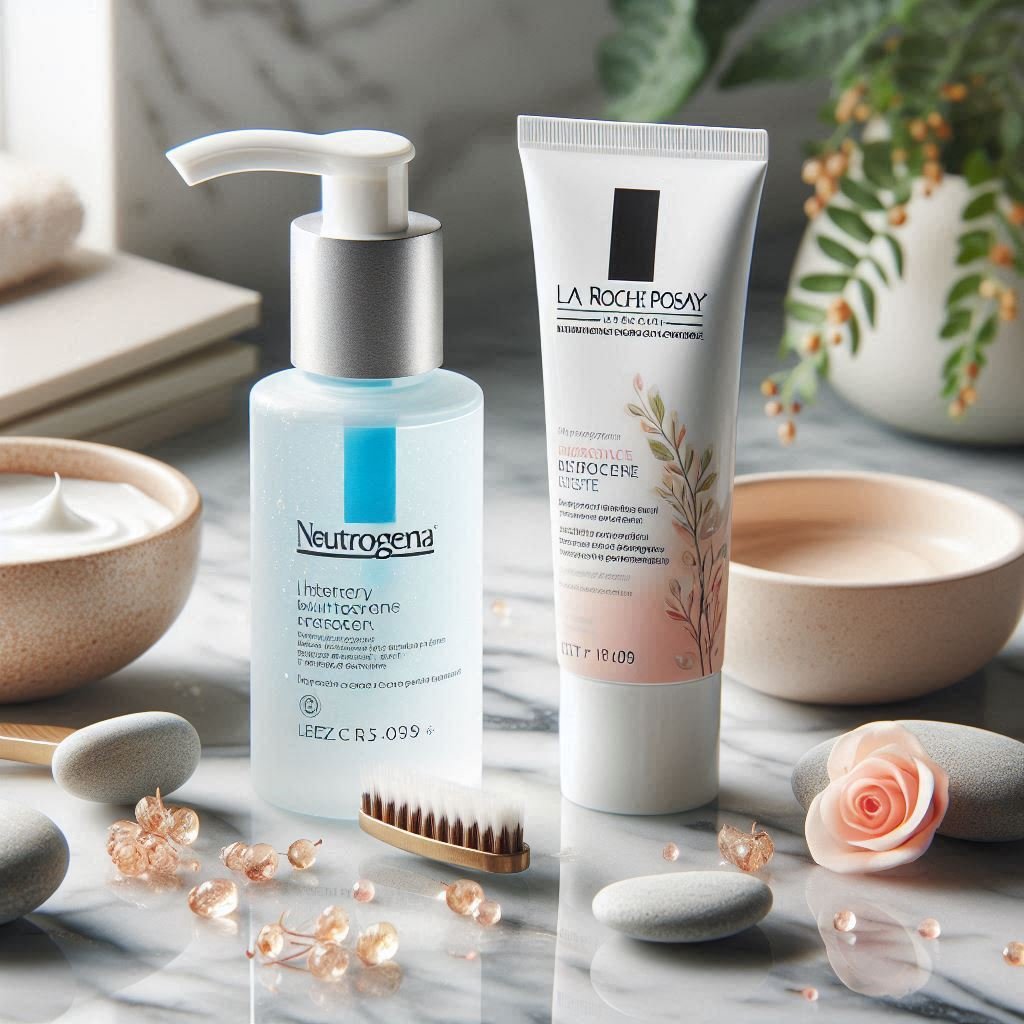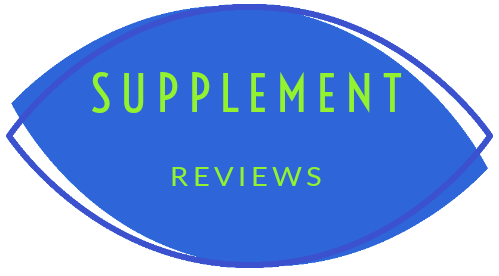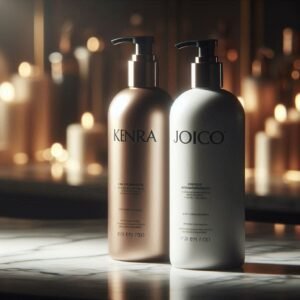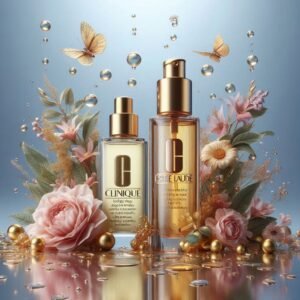As you stand in front of the skincare aisle, weighing the pros and cons of Neutrogena and La Roche Posay, you’re not alone. Both brands have built a reputation for gentle, effective products, but which one is right for you? The answer lies in understanding their unique strengths and weaknesses.
You’ll need to ponder your skin type, concerns, and priorities. Do you need a broad range of products or targeted solutions? What are your budget constraints and personal preferences? The path to making an informed decision starts here, and by exploring these factors, you’ll uncover the perfect fit for your skin.
A Quick Overview

- Neutrogena offers a broader product range for diverse skin types and concerns, while La Roche Posay focuses on targeted solutions for specific skin issues.
- Both brands prioritize gentle, non-irritating ingredients, with Neutrogena’s Hydro Boost line and La Roche Posay’s Toleriane Ultra Fluid suitable for sensitive skin.
- Neutrogena’s products often feature a combination of active ingredients, whereas La Roche Posay focuses on the potency of a single, hero ingredient to address specific skin concerns.
- Budget is a crucial factor, with Neutrogena offering more affordable options and La Roche Posay positioned as a premium brand with luxury products.
- Individual skin type, concerns, and goals play a significant role in deciding between Neutrogena and La Roche Posay, with both brands offering customization options.
Brand History and Philosophy
As you explore into the world of skincare, have you ever wondered how two popular brands, Neutrogena and La Roche Posay, came to be and what philosophies drive their product development?
Let’s delve into their brand history and philosophy to understand what sets them apart.
Neutrogena, founded in 1930, is built on the brand value of making skincare accessible to everyone.
They believe in empowering individuals to take control of their skin health, offering a wide range of products that cater to diverse skin types and concerns.
Their corporate social responsibility initiatives focus on promoting sustainability and reducing environmental impact.
La Roche Posay, established in 1975, is driven by the philosophy of creating products that respect and protect the skin.
They prioritize using natural ingredients and innovative formulations to address specific skin concerns.
The brand values transparency, ensuring that their products are free from harsh chemicals and allergens.
La Roche Posay’s corporate social responsibility efforts focus on reducing carbon footprint and promoting eco-friendly practices throughout their supply chain.
Understanding the brand history and philosophy of Neutrogena and La Roche Posay can help you make informed decisions about the products that align with your values and skin goals.
Product Range Comparison
When comparing the product ranges of Neutrogena and La Roche Posay, you’ll notice distinct differences in their offerings, with Neutrogena boasting a broader spectrum of products catering to diverse skin types and concerns, while La Roche Posay focuses on targeted solutions for specific skin issues.
Neutrogena’s extensive range covers everything from acne treatments to anti-aging creams, offering a one-stop-shop for customers with varying skin needs.
On the other hand, La Roche Posay concentrates on addressing specific concerns, such as rosacea, eczema, and sensitive skin, with products designed to provide tailored solutions.
Despite these differences, there’s some product overlap between the two brands, particularly in the moisturizer and sunscreen categories.
However, each brand’s uniqueness shines through in their approach to product development.
Neutrogena’s products often feature a combination of active ingredients, while La Roche Posay focuses on the potency of a single, hero ingredient.
This distinction in approach allows customers to choose the brand that best aligns with their individual skin goals and preferences, giving them the freedom to make informed decisions about their skincare routine.
Key Ingredients Breakdown
You’ll find that Neutrogena and La Roche Posay differ substantially in their key ingredients, with Neutrogena often combining active ingredients like salicylic acid, hyaluronic acid, and vitamin E to tackle various skin concerns, while La Roche Posay relies on the potency of a single, hero ingredient, such as caffeine or shea butter, to address specific skin issues.
This formulation difference is significant, as it affects the overall efficacy and gentleness of the products. Neutrogena’s multi-ingredient approach can be beneficial for those with multiple skin concerns, but may also increase the risk of irritation. La Roche Posay’s focus on a single hero ingredient, on the other hand, allows for a more targeted approach, but may not be as effective for complex skin issues.
| Brand | Key Ingredients | Ingredient Sourcing |
|---|---|---|
| Neutrogena | Salicylic acid, hyaluronic acid, vitamin E | Globally sourced from various suppliers |
| La Roche Posay | Caffeine, shea butter, glycerin | Sourced from environmentally responsible suppliers |
| Both | Water, glycols, emollients | Varies depending on product and region |
Skin Type Suitability
When it comes to choosing between Neutrogena and La Roche Posay, your skin type plays a significant role in making the right decision.
If you’re struggling with oily skin concerns, you’ll want to know which brand offers products that effectively control shine and minimize pores.
Similarly, if you have sensitive skin needs, you’ll need to determine which brand provides gentle, non-irritating formulas that soothe and calm your skin.
Oily Skin Concerns
If you have oily skin, you’re likely no stranger to the frustration of dealing with excess shine, clogged pores, and acne breakouts. Oily skin triggers, such as hormonal changes, genetics, and environmental factors, can disrupt your skin’s natural oil balance, leading to a multitude of issues.
To combat oily skin, it’s crucial to understand the underlying causes and find products that cater to your specific needs.
Look for oil-controlling ingredients: Products containing salicylic acid, glycolic acid, or tea tree oil can help regulate oil production and unclog pores.
Choose lightweight, non-comedogenic products: These won’t clog pores or exacerbate oiliness, allowing your skin to breathe and function naturally.
Avoid heavy moisturizers: Instead, opt for lightweight, oil-free moisturizers that won’t add to your skin’s oiliness.
Exfoliate regularly: Gentle exfoliation can help remove dead skin cells, unclog pores, and maintain a healthy skin oil balance.
Sensitive Skin Needs
For sensitive skin, a vital step is to identify gentle, fragrance-free, and hypoallergenic products that cater to its delicate nature.
You know your skin is sensitive when it reacts to even the slightest change in products or environment.
To soothe and calm your skin, you need to adopt calming techniques and soothing routines that work in harmony with your skin type.
When it comes to Neutrogena and La Roche Posay, both brands offer a range of products suitable for sensitive skin.
Neutrogena’s Hydro Boost line is fragrance-free and gentle, making it an excellent choice for sensitive skin.
La Roche Posay’s Toleriane Ultra Fluid, on the other hand, is formulated with caffeine and shea butter to provide long-lasting hydration and comfort.
Both brands prioritize gentle, non-irritating ingredients that won’t exacerbate sensitivity.
By incorporating products from these brands into your routine, you can create a soothing regimen that calms and comforts your skin.
Acne Treatment Options
You have several acne treatment options to weigh when deciding between Neutrogena and La Roche Posay products. Both brands offer a range of solutions to help you tackle acne, but comprehending your skin type and acne triggers is vital to make an informed decision.
When it comes to acne treatment, you should consider the following factors:
- Acne triggers: Identify what causes your acne, whether it’s hormonal fluctuations, stress, or environmental factors. This will help you choose a product that targets the root cause of your acne.
- Hormonal balance: If your acne is linked to hormonal imbalances, look for products containing ingredients that help regulate hormones, such as salicylic acid or tea tree oil.
- Benzoyl peroxide content: Both Neutrogena and La Roche Posay offer products with benzoyl peroxide, which helps kill acne-causing bacteria. However, if you have sensitive skin, you may want to opt for a lower concentration.
- Spot treatment or full-face treatment: Decide whether you need a spot treatment for occasional breakouts or a full-face treatment for more persistent acne.
Moisturizing Product Lines
Beyond tackling acne, your skin needs a solid moisturizing foundation to stay healthy, which is where Neutrogena and La Roche Posay’s moisturizing product lines come in. Both brands offer a range of moisturizers that cater to different skin types and concerns.
| Moisturizer Features | Neutrogena | La Roche Posay |
|---|---|---|
| Moisturizer textures | Lightweight, non-greasy, and oil-free options | Rich, creamy, and hydrating textures |
| Formula innovations | Hydro Boost technology for intense hydration | Thermal Water-rich formulas for soothing skin |
| Customization options | Products for specific skin concerns (e.g., dry, oily, combination) | Products for specific skin types (e.g., sensitive, acne-prone) |
| Key ingredients | Hyaluronic acid, vitamin E, and glycerin | Glycerin, shea butter, and antioxidants |
When it comes to moisturizer textures, Neutrogena offers lightweight, non-greasy, and oil-free options, while La Roche Posay provides rich, creamy, and hydrating textures. With regard to formula innovations, Neutrogena’s Hydro Boost technology provides intense hydration, whereas La Roche Posay’s Thermal Water-rich formulas soothe and calm the skin. Both brands offer customization options, with Neutrogena catering to specific skin concerns and La Roche Posay targeting specific skin types.
Sun Protection Offerings
As you venture into the world of sun protection, you’ll find that both Neutrogena and La Roche Posay have got you covered.
Both Neutrogena and La Roche Posay recognize the importance of sun protection, offering a range of products that provide broad-spectrum defense against UVA and UVB rays. Whether you’re looking for summer essentials or daily routines, these brands have a solution for you.
- SPF range: Both brands offer a range of SPF options, from 15 to 100, catering to different skin types and needs.
- Water-resistance: Many products from both brands are water-resistant, making them perfect for active lifestyles or summer fun.
- Moisturizing benefits: Several sun protection products from Neutrogena and La Roche Posay also provide moisturizing benefits, hydrating your skin while protecting it from the sun.
- Mineral and chemical active ingredients: Both brands offer products with mineral active ingredients like zinc oxide and titanium dioxide, as well as chemical active ingredients like avobenzone and oxybenzone, giving you a choice based on your skin type and preferences.
Anti-Aging Solutions
As you explore the anti-aging solutions offered by Neutrogena and La Roche Posay, you’ll want to ponder three key areas:
wrinkle reducing formulas, skin renewal treatments, and age spot fading.
These points will help you determine which brand’s products best address your specific concerns and needs.
Wrinkle Reducing Formulas
When it comes to reducing wrinkles, you’re likely looking for formulas that pack a punch, and both Neutrogena and La Roche Posay offer anti-aging solutions that claim to deliver.
As you navigate the complex world of wrinkle-reducing formulas, thorough understanding is vital to grasp how each brand addresses facial topology and wrinkle patterns.
Neutrogena’s formulas often focus on filling in wrinkles and fine lines, providing an immediate smoothing effect. Their products contain ingredients like hyaluronic acid and vitamin E, which help to plump and firm the skin.
La Roche Posay, on the other hand, takes a more exhaustive approach, addressing the underlying causes of wrinkles. Their formulas often contain antioxidants and peptides, which work to reduce wrinkle patterns and improve skin elasticity.
La Roche Posay’s formulas tend to penetrate deeper into the skin, addressing wrinkles at the source. Neutrogena’s formulas, while effective, may not penetrate as deeply.
Both brands offer a range of products tailored to specific skin types and concerns, allowing you to find a formula that suits your unique needs.
Skin Renewal Treatments
You’re likely seeking skin renewal treatments that stimulate collagen production, improve skin texture, and minimize visible signs of aging, and both Neutrogena and La Roche Posay offer anti-aging solutions that can help you achieve these goals.
When it comes to skin renewal, micro needling treatments are a popular choice. Neutrogena’s Rapid Wrinkle Repair line incorporates micro needling technology to stimulate collagen production and improve skin texture.
La Roche Posay, on the other hand, offers a range of chemical peeling products that gently exfoliate the skin, revealing smoother, brighter skin. Chemical peeling is an effective way to remove dead skin cells, unclog pores, and reduce the appearance of fine lines and wrinkles.
Both brands offer a range of products that cater to different skin types and concerns, so you’re likely to find a solution that suits your skin. Whether you’re looking for a gentle, at-home treatment or a more intense, in-clinic procedure, Neutrogena and La Roche Posay have got you covered.
Age Spot Fading
Now that you’ve addressed skin texture and collagen production, it’s time to tackle another major concern of aging skin: age spots, which can make your skin look dull and uneven. Age spots, also known as hyperpigmentation, are a common issue that can be challenging to address. However, with the right products and treatments, you can achieve significant improvements.
Dark spot correction products containing ingredients like vitamin C, niacinamide, or licorice extract have been shown to inhibit melanin production and reduce the appearance of dark spots.
Uneven tone correction can be achieved with exfoliants like alpha-hydroxy acids (AHAs) or beta-hydroxy acids (BHAs) that help remove dead skin cells and promote cell turnover, revealing a brighter, more even-toned complexion.
Sun protection is essential to prevent further dark spot formation by using broad-spectrum sunscreens with an SPF of at least 30 daily.
Consistency is key: stick to your skincare routine and be patient – age spot fading can take time, but with consistent effort, you can achieve noticeable results.
User Reviews and Ratings
Both Neutrogena and La Roche Posay have garnered a significant following, with thousands of customers sharing their experiences and opinions online, giving you a wealth of information to help you make an informed decision.
When sifting through user reviews, it’s crucial to be cautious of fake reviews and rating manipulation. Some companies might fabricate positive reviews or incentivize customers to leave glowing feedback.
Be wary of reviews that seem overly promotional or lack specific details about the product’s performance. Look for red flags, such as an unusual number of reviews posted in a short timeframe or reviewers with suspiciously similar writing styles.
Instead, focus on reviews from verified purchasers who provide detailed, balanced feedback. Pay attention to common praises and complaints, as well as any recurring issues.
You can also check out review websites that use algorithms to detect and filter out fake reviews. By being a savvy consumer, you can cut through the noise and get a more accurate picture of which brand is best for you.
Price Point Comparison
When comparing Neutrogena and La Roche Posay, your wallet is likely to be a key factor, as prices vary substantially between the two brands, with some products differing by as much as 50% or more.
If you’re on a tight budget, Neutrogena might be the way to go, offering budget-friendly options for skincare essentials like cleansers and moisturizers. On the other hand, La Roche Posay is positioned as a premium brand, with luxury splurges like high-end serums and targeted treatments.
Cleansers: Neutrogena ($8-$12), La Roche Posay ($15-$25)
Moisturizers: Neutrogena ($10-$18), La Roche Posay ($20-$35)
Serums: Neutrogena ($15-$25), La Roche Posay ($30-$50)
Sunscreen: Neutrogena ($10-$15), La Roche Posay ($20-$30)
Ultimately, the choice between Neutrogena and La Roche Posay will depend on your individual priorities and budget constraints. If you’re looking for affordable, no-frills skincare, Neutrogena might be the better choice. But if you’re willing to splurge on high-quality, dermatologist-recommended products, La Roche Posay could be worth the investment.
Final Verdict and Recommendation
After weighing the pros and cons of each brand, you’re likely left wondering which one is right for you, and ultimately, the decision comes down to your individual skin type, concerns, and budget.
If you’re looking for a more affordable option with a wide range of products, Neutrogena might be the way to go. However, if you’re willing to invest in a brand that specializes in sensitive skin and offers high-quality, dermatologist-recommended products, La Roche Posay is the better choice.
It’s essential to weigh the importance of your personal preferences and skin goals when making a decision. If you’re someone who values brand loyalty and is committed to using products from a single brand, La Roche Posay’s streamlined product line might appeal to you.
On the other hand, if you prefer to mix and match products from different brands, Neutrogena’s extensive range might be more suitable.
Ultimately, the decision between Neutrogena and La Roche Posay comes down to your unique needs and priorities. Take the time to reflect on your skin concerns, budget, and personal preferences, and choose the brand that aligns best with your values and goals.
Frequently Asked Questions
Can I Use Neutrogena Products on Sensitive Skin With Eczema?
You can try using Neutrogena products on sensitive skin with eczema, but be cautious of potential skin concerns and eczema triggers; always patch test and start with gentle, fragrance-free formulas to minimize reactions.
Are La Roche Posay Products Sulfate-Free and Cruelty-Free?
You’ll be relieved to know that La Roche Posay products are largely sulfate-free, ensuring gentle skin tolerance. Additionally, they prioritize ingredient integrity and cruelty-free practices, giving you the freedom to choose products that align with your values.
Do Neutrogena Products Contain Artificial Fragrances and Dyes?
You’re right to wonder: do Neutrogena products contain artificial fragrances and dyes? Unfortunately, yes, many do, which can trigger fragrance concerns and skin reactions in sensitive individuals, limiting your freedom to choose products that work for you.
Can I Use La Roche Posay Products During Pregnancy and Breastfeeding?
When you’re expecting or nursing, you prioritize prenatal skincare and maternal beauty. You’ll be relieved to know that La Roche Posay products are generally safe for use during pregnancy and breastfeeding, but always check with your doctor or dermatologist first.
Are Neutrogena and La Roche Posay Products Available in Refillable Packaging?
You’re looking for eco-friendly options, and rightly so! You’ll be pleased to know that both Neutrogena and La Roche Posay offer some sustainable beauty solutions with refillable packaging, reducing waste and promoting environmentally responsible practices.
Conclusion
Based on your skin type, concerns, and goals, you’ve weighed the pros and cons of Neutrogena and La Roche Posay.
Now, it’s time to make an informed decision.
If you prioritize a broad range of products and customization options, Neutrogena might be the better fit.
However, if you’re looking for targeted solutions for specific skin issues, La Roche Posay’s expertise is worth considering.
Ultimately, choose the brand that aligns with your unique skin needs and preferences.




